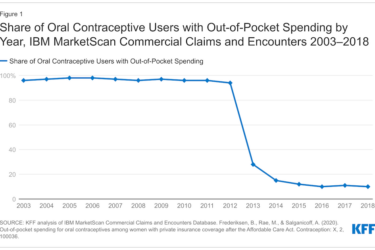
A new report on how health insurers are complying with the medical loss ratio rules shows insurers spent more on care delivery and less on profit and overhead in 2013 than they did in the previous two years.
The report, “Consumers Benefited From 80/20 Rule in 2013,” from the federal Department of Health and Human Services (HHS) shows that the percentage of consumers insured by companies that met or exceeded the requirements under the MLR rules has risen each year since the rules became effective in 2011. Tables accompanying the report offer some great story ideas for journalists who want to dig deeper into why insurers in their states would pay rebates to consumers rather than put those funds into care delivery.
Also called the 80/20 rules, the MLR regulations in the Affordable Care Act require insurers to spend a minimum of 80 percent of premium income on delivering care (and not on profit and overhead) in the small group and individual markets and at least 85 percent of premium income on care delivery in the large group market.
Under the MLR rules, if insurers fail to spend at least at these levels, they have to rebate the difference to consumers. Those rebates are due by Aug. 1.
“In the first three years of the MLR program, individual and employer plan enrollees received or will receive over $1.9 billion in refunds,” the HHS report said.
As a result of these rules, it’s possible to track insurers’ spending on care delivery over time by reviewing how much they rebate to consumers each year. This year, health insurers will pay $332 million to consumers based on how they spent their premium income in 2013. That’s an average of $80 to 6.8 million Americans. The $332 million is well below the $1.1 billion that health insurers paid in rebates in 2011, and below the $520 million they paid in 2012.
The HHS report comes two weeks after the federal Government Accountability Office issued a report, “Private Health Insurance: Early Effects of Medical Loss Ratio Requirements and Rebates on Insurers and Enrollees,”on how much health insurers paid in MLR rebates to policyholders in the first two years under the ACA. The GAO report was significant because, as we reported, it showed health insurers spent less than 1.6 percent of net premiums on quality improvement in 2011 and 2012.
By Aug. 1, 6.8 million consumers in all 50 states will receive more than $332 million in refunds, an average of $80 per individual. To issue the refund, health insurers must mail a check; reimburse the account used to pay the premium; reduce future premiums; or, if the consumer bought insurance through an employer, the employer must provide the refund.
The report shows that spending on overhead has declined in the individual and small and large group markets since 2011, the first year under the MLR rules.
Along with the report, HHS provided two tables that may be a good source of stories. One table, Issuers Owing Refunds for 2013 (PDF), shows how much each insurer paid in refunds in each market (individual, small and large group) in each state. My insurer paid the most in Massachusetts, for example, which explains why my premium will be lower next month. Last August, I paid a lower premium too, again because my insurer did not spent enough on care delivery.
Here are some questions journalists can ask:
Why would an insurer pay refunds to consumers each year rather than put that money into care delivery? Is it inefficiency or bad management? Also, which insurers paid the most in rebates? In Florida, for example, Blue Cross Blue Shield of Florida, Inc., was on top, paying more than $10 million in the small group market. BCBS paid nothing in the individual or large group markets. Health Options Inc., was second in Florida, paying $9.1 million in the small and large group markets combined but nothing in the individual market.
The second table, 2013 MLR Refunds by State (PDF), shows the amount paid in refunds and the number of consumers getting refunds in each market in each state. There’s a story here too. For example, Florida’s insurers were by far the leaders in 2013 in failing to meet the MLR rules and will pay $41.7 million this year. A question to ask: Why would Florida be such an outlier? Maryland’s insurers, for example, were a distant second, paying $17.3 million this year. And note that Florida was second in 2012 (paying $55.5 million last year) and in 2011 (paying $123.6 million).










